A Gull
Topic: Nature and Botanicals
"The Western Gull, Larus occidentalis, is a large white-headed gull that lives on the western coast of North America. It was previously considered co-specific with the Yellow-footed Gull (Larus livens) of the Gulf of California. The Western Gull ranges from Washington and British Columbia to Baja California, and because of its convenient colonies on the coast of California it is well studied.
"The Western Gull is currently not considered threatened. However, they have, for a gull, a restricted range. Numbers were greatly reduced in the 19th century by the taking of seabird eggs for the growing city of San Francisco. Western Gull colonies also suffered from disturbance where they were turned into lighthouse stations, or, in the case of Alcatraz, a prison.
"Western Gulls are very aggressive when defending their territories and consequently were persecuted as a menace. The automating of the lighthouses, and the closing of Alcatraz Prison, allowed the species to reclaim parts of its range. They are currently vulnerable to climatic events like El Niño events and oil spills.
"The Western Gull was one of the antagonists in Alfred Hitchcock's famous movie, The Birds, which was filmed in Bodega, California. The biggest Western Gull colony, the Farallon Islands, is located some 35 miles southwest of Bodega."
Well, you could look it up. This one, on the beach at Malibu, seems more thoughtful than antagonistic. 
Much that is good and all that is evil has gathered itself up into the Western Gull. He is rather the handsomest of the blue-mantled Laridae, for the depth of color in the mantle, in sharp contrast with the snowy plumage of back and breast, gives him an appearance of sturdiness and quality which is not easily dispelled by subsequent knowledge of the black heart within. As a scavenger, the Western Gull is impeccable. Wielding the besom of hunger, he and his kind sweep the beaches clean and purge the water-front of all pollution. But a scavenger is not necessarily a good citizen. Call him a ghoul, rather, for the Western Gull is cruel of beak and bottomless of maw. Pity, with him, is a thing unknown; and when one of their own comrades dies, these feathered jackals fall upon him without compunction, a veritable Leichnamveranderungsgebrauchsgesellschaft. If he thus mistreats his own kind, be assured that this gull asks only two questions of any other living thing: First, 'Am I hungry?' (Answer, 'Yes.') Second, 'Can I get away with it? (Answer, 'I'll try.') - William Leon Dawson, Birds of California, 1923
Waves of Light
Topic: Light and Shadow
 Location - Surfrider Beach on the north side of Malibu Pier, where each year they hold the Call to the Wall longboard surfing competition (there is an old stone wall above the beach)
Location - Surfrider Beach on the north side of Malibu Pier, where each year they hold the Call to the Wall longboard surfing competition (there is an old stone wall above the beach)
Date and Time - Wednesday, August 2, 2006, 11:30 am Pacific Time
Conditions - full sun with a few widely scattered low clouds, the remnants of the morning marine layer, burning off inland, with air temperature in the high seventies and water temperature sixty-five, light onshore breeze - surf was three to four foot sets with an occasional five foot set (rated fair-good)
These shots - Nikon D-70 with the 70-300mm telephoto lens set to manual focus, with a UV filter fitted on the lens, and the camera's automatic shooting mode set to sport (fast shutter speed - 1/1600 second, F/5.6, ISO 200 - and whatever else the D-70 does there) - shooting pretty much into the sun glaring off the ocean. The challenge was working out the light levels, a backlighting problem - getting the wave detail in full light, some detail of the much darker surfer, and the surfer's reflection in the water below. The first, on the right, solves the problem. Below, you just have to love the old guy in the baseball cap. The third shot produced almost abstract silhouettes and quite natural realistic waves - a sort of surreal mix.
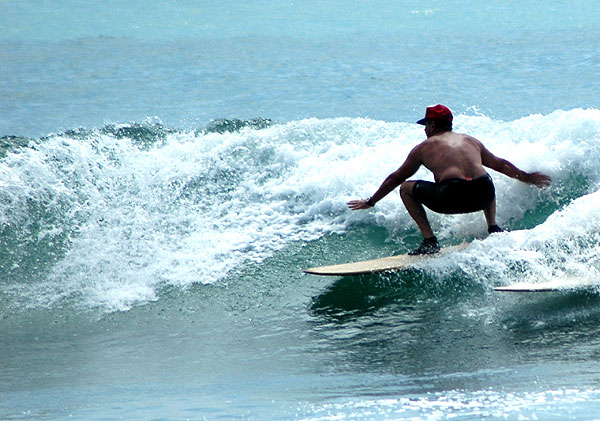

Odd Birds
Topic: Nature and Botanicals
 A pelican is any of several very large water birds with a distinctive pouch under the beak belonging to the bird family Pelecanidae. Along with the darters, cormorants, gannets, boobies, frigatebirds, and tropicbirds, they make up the order Pelecaniformes. Like other birds in that group, pelicans have all four toes webbed (they are totipalmate). Pelicans can be found on all continents - except Antarctica - in inland and coastal waters. You just won't find them in the polar regions, or the deep ocean way out at sea, or on oceanic islands, or anywhere in inland South America. Others that that they're there if you look.
A pelican is any of several very large water birds with a distinctive pouch under the beak belonging to the bird family Pelecanidae. Along with the darters, cormorants, gannets, boobies, frigatebirds, and tropicbirds, they make up the order Pelecaniformes. Like other birds in that group, pelicans have all four toes webbed (they are totipalmate). Pelicans can be found on all continents - except Antarctica - in inland and coastal waters. You just won't find them in the polar regions, or the deep ocean way out at sea, or on oceanic islands, or anywhere in inland South America. Others that that they're there if you look.
These at the Malibu Creek lagoon, at the edge of the Pacific, just before noon on Wednesday, August 2, are Pelecanus occidentalis californicus - the California Brown Pelican. Along with the much larger American White Pelican - Pelecanus erythrorhynchos - the California Brown is protected by the Migratory Bird Treaty Act of 1918. The surf was up where the lagoon empties into the ocean, and there were maybe sixty surfers doing their thing. No one was paying attention to the pelicans, much less threatening them - these guys had nothing to worry about. And pelicans have been around for over forty million years. The surfers are transitory.
Make of this what you will - In medieval Europe, the pelican was thought to be particularly attentive to her young, to the point of providing her own blood when no other food was available. As a result, the pelican became a symbol of the Passion of Jesus and of the Eucharist. It also became a symbol in bestiaries for self-sacrifice, and was used in heraldry ("a pelican in her piety" or "a pelican vulning (wounding) herself"). Another version of this is that the Pelican used to kill its young and then resurrect them with its blood, this being analogous to the sacrifice of Jesus.
That aside, this is a technical exercise - using the 70-300mm telephoto lens set to manual focus, and the automatic shooting mode set to sport (fast shutter speed and whatever else the D-70 does there), the idea was to keep far enough away from the birds so they weren't spooked, but to capture as much detail as possible, so you get a sense of what they're really like. Out here you usually see them from a distance, flying in a line above the surf, or plunge-diving solo for a quick bite of something herring-like. That's not good enough - you have to get up close and personal, relatively speaking.
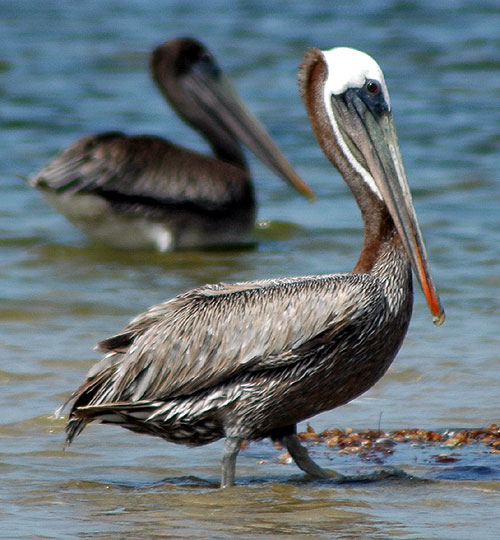


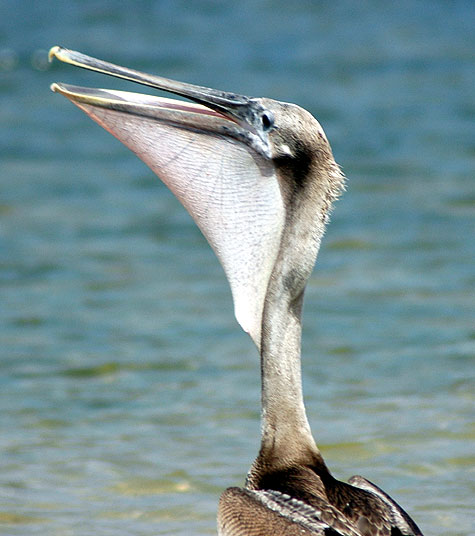

On the way home, on Lincoln Boulevard one block south of Montana in Santa Monica - Gallus gallus domesticus (domestic chicken), interpreted, and incorporated into an old Oldsmobile sedan that has seen better days. Just another bird.
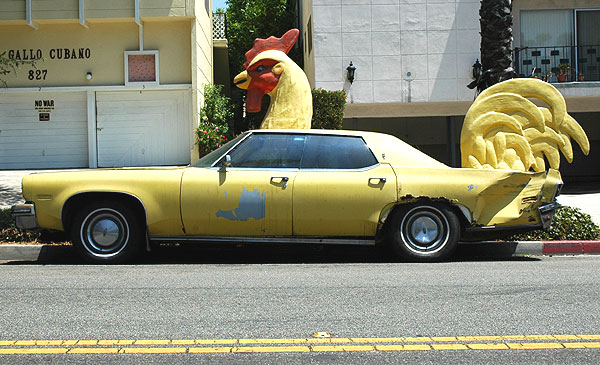
More Kites
Topic: Unusual Events
This is a supplement to the previous item, The Thirty-Second Annual Festival of the Kite - Redondo Beach at the pier there, Sunday, July 30. The link above covers the basics of the event, with a lot of items you can click for even more information, and has nine photos. One reader requested more kites - he seems to need a bit more relief in this weary world - so here they are.
Arrive at the pier around one, find a place to park (not easy), grab the camera bag and head over to the crowd, and there are these guys doing dual acrobatics, or kite dancing, to something loud being pumped in - new age meets techno. They were having a blast, the two kits bobbing and whipping around together. The crowd cheered, but getting it right would require video, with sound. This will have to do. 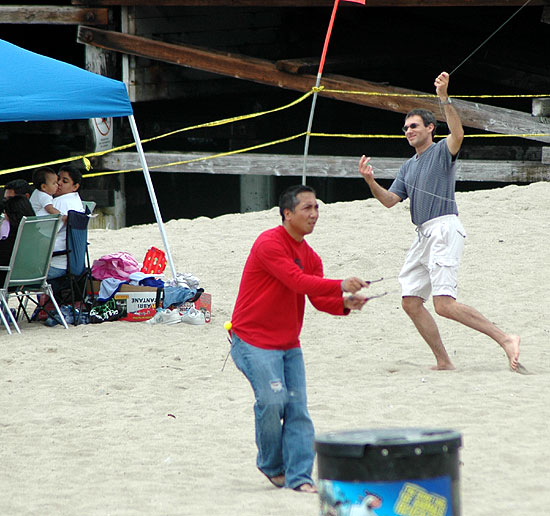
The rest was just kites (the third is very mysterious) -
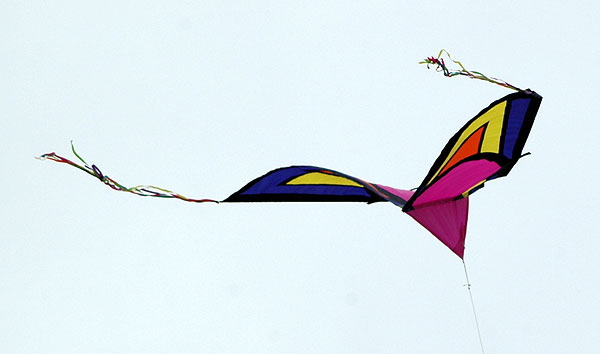

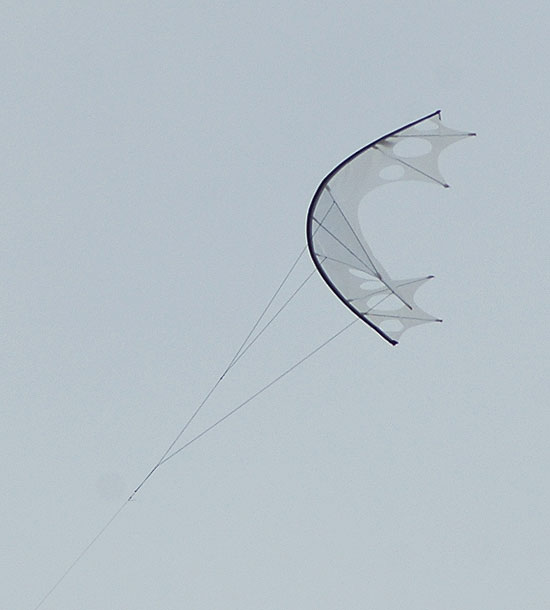
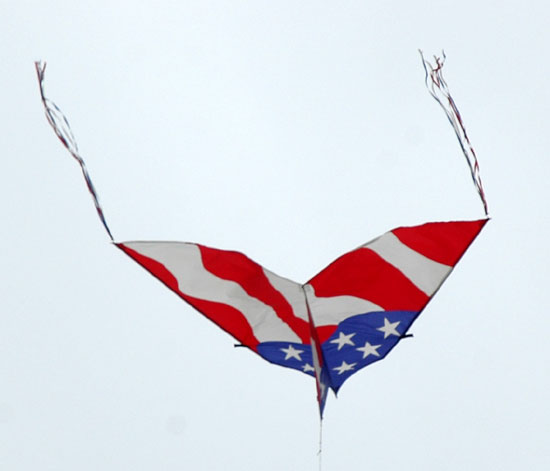
Air traffic (the Cessna 172 is pulling a banner promoting the local comedy club) -
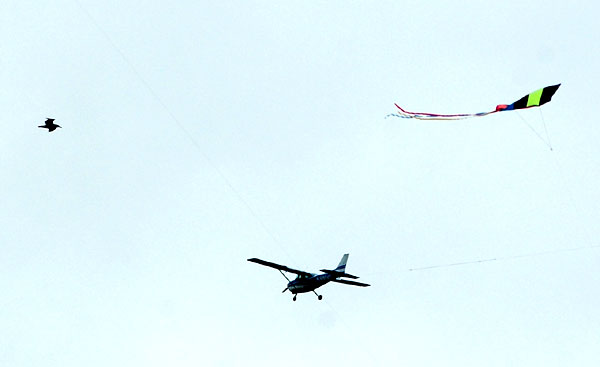
Wind power -
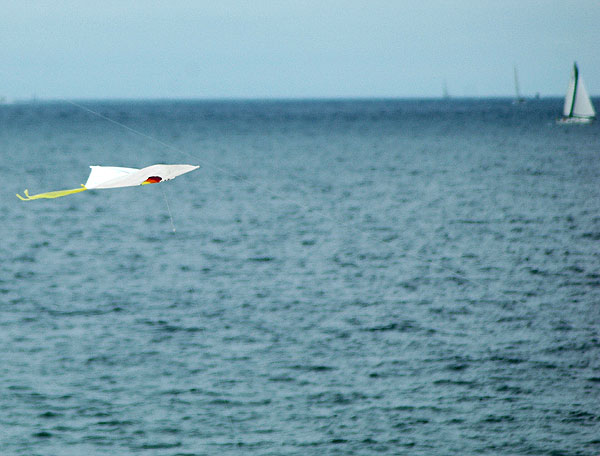

History: Henry Made a Lady Out of Lizzie
Topic: Oddities
History: Henry Made a Lady Out of Lizzie
 This restored 1931 Ford Model A was parked at a strip mall in Redondo Beach, with no one around, so a few shots were easy. It's an exact match for this one at the Smithsonian Institute in Washington, a Deluxe Roadster with the two-door body and folding top. It has a forty horsepower four-cylinder engine, which was pretty good in 1931. And this one has all the accessories - side-mounted spare tires and rear-view mirrors, and the glass wind vanes beside the windshield, in this case etched glass wind vanes. The optional hood ornament is supposed to be a quail in flight.
This restored 1931 Ford Model A was parked at a strip mall in Redondo Beach, with no one around, so a few shots were easy. It's an exact match for this one at the Smithsonian Institute in Washington, a Deluxe Roadster with the two-door body and folding top. It has a forty horsepower four-cylinder engine, which was pretty good in 1931. And this one has all the accessories - side-mounted spare tires and rear-view mirrors, and the glass wind vanes beside the windshield, in this case etched glass wind vanes. The optional hood ornament is supposed to be a quail in flight.
The history - In the late 1920s and early 1930s, the Ford Model A was one of the most publicized and best-selling cars in America. It was sporty, attractive, well-built, and smooth-running compared to the Model T, which it replaced in the 1928 model year. Thousands of people were eager to see for themselves that "Henry's made a lady out of Lizzie," and they stormed Ford showrooms when the Model A debuted on December 2, 1927. In less than two weeks there were 400,000 orders, and Henry Ford could not keep up with the demand for his latest "gift" to an increasingly mobile nation. Despite the onset of the Depression, Model A production remained strong at 1,261,053 cars in 1930 but fell to 626,579 cars in 1931, the last year that the Model A was produced.
This one has been lovingly restored, or perhaps obsessively restored. It may be "better than original" - or at least what a new 1931 Ford Model A looked like on its best day, fresh from the factory and as yet not driven a mile. The ideal Ford? This one didn't seem real. And no one was around to explain what it was doing there, all alone. It's a mystery.


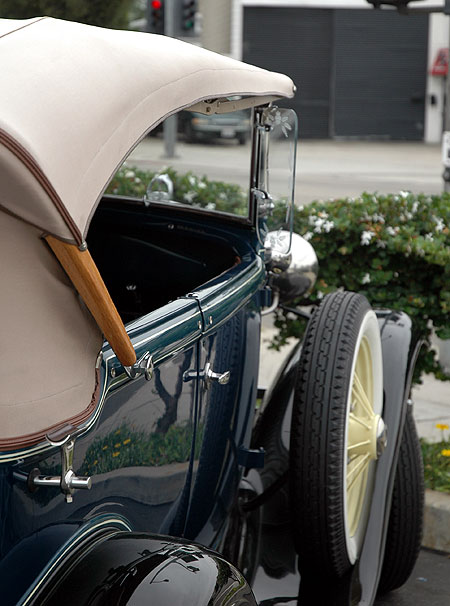
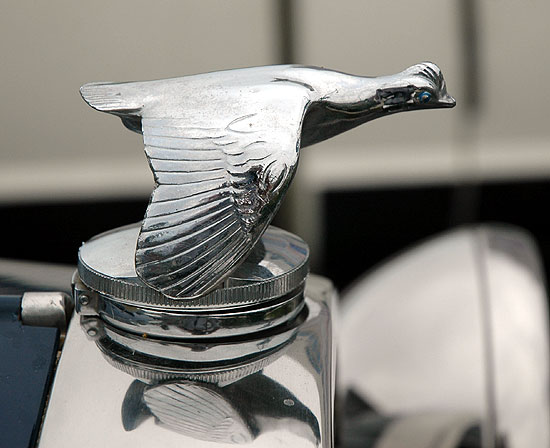
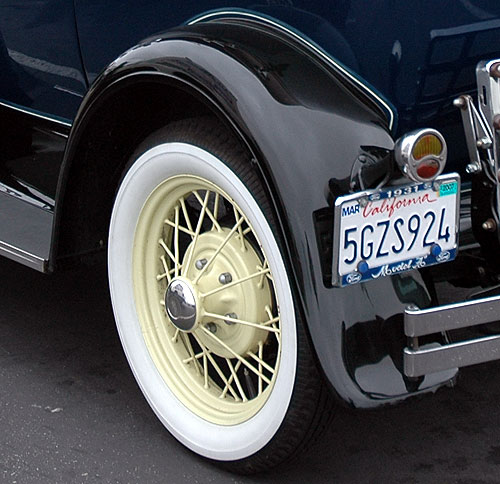




 Location - Surfrider Beach on the north side of Malibu Pier, where each year they hold the
Location - Surfrider Beach on the north side of Malibu Pier, where each year they hold the 

 A pelican is any of several very large water birds with a distinctive pouch under the beak belonging to the bird family Pelecanidae. Along with the darters, cormorants, gannets, boobies, frigatebirds, and tropicbirds, they make up the order Pelecaniformes. Like other birds in that group, pelicans have all four toes webbed (they are totipalmate). Pelicans can be found on all continents - except Antarctica - in inland and coastal waters. You just won't find them in the polar regions, or the deep ocean way out at sea, or on oceanic islands, or anywhere in inland South America. Others that that they're there if you look.
A pelican is any of several very large water birds with a distinctive pouch under the beak belonging to the bird family Pelecanidae. Along with the darters, cormorants, gannets, boobies, frigatebirds, and tropicbirds, they make up the order Pelecaniformes. Like other birds in that group, pelicans have all four toes webbed (they are totipalmate). Pelicans can be found on all continents - except Antarctica - in inland and coastal waters. You just won't find them in the polar regions, or the deep ocean way out at sea, or on oceanic islands, or anywhere in inland South America. Others that that they're there if you look. 













 This restored 1931 Ford Model A was parked at a strip mall in Redondo Beach, with no one around, so a few shots were easy. It's an exact match for
This restored 1931 Ford Model A was parked at a strip mall in Redondo Beach, with no one around, so a few shots were easy. It's an exact match for 




